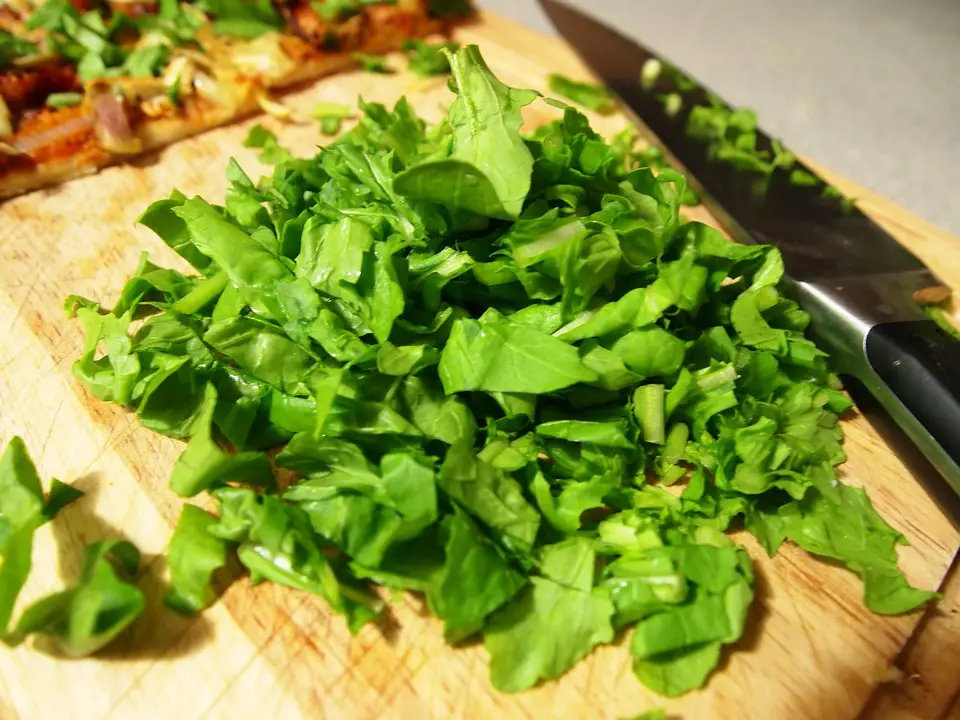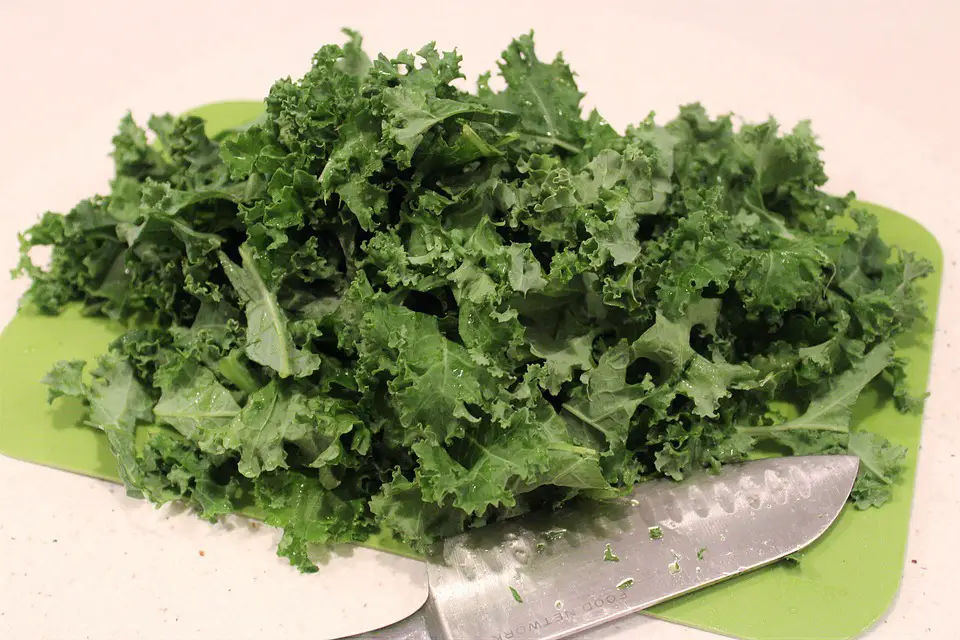Here are the tips for freezing vegetables for later use or adding them to soups and sauces. You’ll learn to freeze greens without losing their color, flavor, and nutrients. You’ll also find out how to prevent enzymes from spoiling.
The best way to freeze greens is to use a rigid plastic container. A square or rectangular straight-sided one works best. They should have tight-fitting lids and half-inch head space. It’s also a good idea to label your containers with the date you are freezing them.

What are Greens?
The name “greens” is a catch-all for various vegetables.
Kale, micro greens, collard greens, spinach, cabbage, beet greens, and watercress are a few of these. This group includes bok choy, Swiss chard, arugula, endive, and romaine lettuce.
Greens are a nutritional powerhouse. They are excellent suppliers of calcium, folate, and several other vitamins and minerals. These include manganese, potassium, and vitamins A, B, C, and D.
There are only a small number of calories with all this nourishment. They are thus the ideal approach to add variety and several healthful elements to your diet.
Many meal preparations might benefit from the addition of fresh greens. Particularly rich in nutrients is the spinach leaf. For spinach artichoke dip, green smoothies, and other delectable recipes calling for a green leafy vegetable, fresh spinach leaves are a need in my home. The same benefits can be obtained from frozen collard greens, frozen spinach, and frozen kale.
How to Freeze Greens?
For safe freezing of leafy greens, follow the directions below.
Choose young, tender greens that are in good color and are free of flaws.
Rinse under cold running water several times to get rid of dirt and grit.
As desired, chop or rip big leaves. Whole, little leaves can be frozen.
Four cups of packed greens per gallon of boiling water are the recommended amount to blanch greens. When the water boils again, the timer for the blanching process begins. Greens should not be steam blanched because the leaves mat and result in improper blanching. Greens that have not been properly blanched can rapidly lose their fresh flavor when frozen.
- For three minutes, blanch the collard greens.
- For two minutes, blanch the other greens.
- For 90 seconds, very fragile spinach leaves are blanched.
- After blanching for the same amount of time, cool the greens in ice water.
- Good drainage
- In freezer-safe containers, pack.
- Leave a 1/2-inch headroom when covering with ice water.
- The date and contents are listed on the label.
- Keep frozen for eight to twelve months.
How to Defrost Greens?
Greens that are frozen can be quickly thawed. Remove them from the freezer the night before you use them, and leave them in the fridge to thaw gently.
If you want them to defrost more quickly, you may also leave them on the counter. At room temperature, they ought to defrost completely in about two hours.
We advise spreading the greens into a single layer to facilitate quicker melting. You can place a piece of kitchen paper underneath the greens to absorb extra moisture from defrosting leaves.
When they have thawed, pat them dry before using.
How to Properly Store Greens in the Fridge?
Your greens must be fully washed and dried before being stored. We advise putting them through a salad spinner to get rid of as much moisture as possible.
Then, wrap them loosely in a tea towel and tie a knot to keep them together. The greens will deteriorate more quickly if they are packed too tightly together.
Place the entire package of greens in a glass pot and place it in the fridge. Since the temperature is most steady towards the rear of the refrigerator, place them there.
Alternatively, you might put the washed and dried greens into resealable storage bags approved for use with food. Do not cram them too tightly within the container after loosely sealing the green.
Before putting the greens in the bag, ensure they are completely dry.
The only time this is irrelevant is if you use a terry cloth bag, as this will stop the moisture from hastening the decomposition of the greens.
More resilient greens, like kale and collard greens, can be kept in a glass of water in the refrigerator if there is room.
Put the stems in the water and stand the plants upright. This will help keep the greens fresher for a longer period and works similarly to preserving flowers in a vase of water.
What Happens When Greens are Blanched?
Preserving your vegetables is what blanching does. When you blanch vegetables, add a pot of water to a rolling boil, and cook them for three minutes. Vegetables won’t be cooked if blanched (although you can freeze cooked vegetables).
Any more time than that will cause them to start cooking, so you should only blanch them briefly. Vegetables should be removed from boiling water immediately and rinsed in cold water before being pat dried.
No matter what you do after blanching the vegetable, you can assist it in keeping its nutrients. Blanching can have a specific use, whether you want to use the vegetables later in a recipe, freeze them, or even prepare a salad.
Vegetables that have been blanched retain their vibrant, natural hues and their natural nutrients and enzymes. Your produce can be preserved and given a longer shelf life by blanching, preventing spoilage.
Why are Greens Considered Best?
You’d think that greens would be another veggie. Why are they so fantastic?
Greens have a huge nutritional density. Yes, they are another vegetable, but these nutrient-rich vegetables offer exceptional nutrition compared to many other veggies.
You should expect to find a lot of vitamins like D, C, A, and even B in most greens, along with tremendous amounts of calcium and folate. Some greens have minerals like manganese, potassium, etc., in addition to these nutrients, which are present in practically all of the above-listed greens. The top multivitamin on Amazon may not always be a better source of nutrients than these greens.
Although these foods are relatively low in calories, they are packed with vitamins and nutrients. This implies that you could eat more of them and take advantage of the advantages of including them in your diet and a larger meal rich in greens.
What Leafy Greens are the Healthiest to Eat?
Vegetables can be contaminated in various ways during the growing, processing, transporting, and storing processes with dangerous germs like E. Coli, listeria, and salmonella.
Due to their size, shape, and cultivation method, some leafy greens are safer than others since they are less likely to harbor bacteria.
Organic leafy greens are the most secure to consume.
The World Health Organization states that although some low concentrations of pesticides won’t directly affect people, chemicals used in food production are generally bad for people. Because of this, I am eating organic greens is generally safer.
Eating only organic vegetables does not automatically protect you from the possibility of catching hazardous bacteria through sources other than pesticide contamination.
A complete head of lettuce is another leafy green that is safer to consume.
The ability of germs to contaminate a head of lettuce is limited by its ability to penetrate deeply into full, dense heads of lettuce.
Remove the outermost layers of a lettuce head before preparing it since they are the most bacterially vulnerable.
Finally, buying your leafy greens directly from farmer’s markets and primary sources will be safer.
How to Tell Greens are Bad?
Visually check leafy greens to determine their quality. They spoil if they turn slimy, lose color, or have an unpleasant smell.
Your leafy greens should be washed in vinegar and cooked at a temperature of 165°F (74°C) to eliminate E. coli, listeria, and other dangerous germs.
In contrast to listeria, a certain type of bacteria called ecoli only thrives on food and is found in the intestines.
It has previously caused significant, broad product recalls due to its ability to spread and multiply quickly on food products.
The North Carolina Department of Health & Human Services reported that 100 out of the approximately 265,000 E Coli infections recorded yearly in the US result in complications and death.
While not all E. Coli strains are hazardous, many are. Always exercise the prudence required to reduce the risk.
What are the Risks Associated with Consuming Greens?
Disease Risks
The disease is another potential problem with leafy vegetables. Like humans, even the healthiest fruits and vegetables can catch diseases—any biological lifeform.
The onset of diseases cannot always be predicted. They develop as a result of sporadic occurrences in the wild or widespread epidemics in crops. However, some patterns show how they are typically brought about.
The plant may become contaminated by feces from other species, rendering it dangerous to consume. This is why it’s so important for farmers to keep their crops away from animals, yet it may be very challenging to keep away a stray bird or small mammal that might be bringing its diseases.
When purchasing leafy greens, fruits, fresh spices, or roots, wash them thoroughly and soak them once you get them home. This can lessen the chance of contamination, foodborne infections, and pesticides.
Nevertheless, there are some instances where the disease is too severe to be easily fought, and once the disease has been discovered, the product in question typically needs to be recalled. It is also crucial to keep them cold while storing them because bacteria primarily thrive in temperatures between 40 and 140 degrees Fahrenheit.
Low but ecologically important doses of ultraviolet B (UVB) radiation control the plant’s secondary metabolism. This study examines the impact of UVB radiation from light-emitting diodes (LEDs) with a peak wavelength of (290 2) nm on the biosynthesis of secondary plant metabolites that are beneficial to health, such as carotenoids, phenolic compounds, and glucosinolates in green and red leafy vegetables of Lactuca sativa, Brassica campestris, and Brassica juncea. It then assesses any potential negative.
Conclusion
Keeping greens in the freezer is a no-brainer if you ask me. It is also the best place to store novelty items such as cookies, candy, and the occasional bottle of wine. The best part is that frozen greens last for up to nine months. If you need to make an emergency dinner or lunch, a quick trip to the freezer will keep you on the right track. This is especially handy if you live in a hot climate or have an impending wedding to attend. As a bonus, you’ll be able to avoid the dreaded post-dinner tummy aches.
Adding frozen greens to soups and sauces can be a great way to enhance the flavor. Frozen greens are a good choice for soups because they maintain their taste and texture when frozen. They can be added to creamed spinach, pasta, rice, and more. If you are looking for a way to add variety to your soup recipes, try blending different soups. You can also add toppings to take the soup from a starter to a supper.
